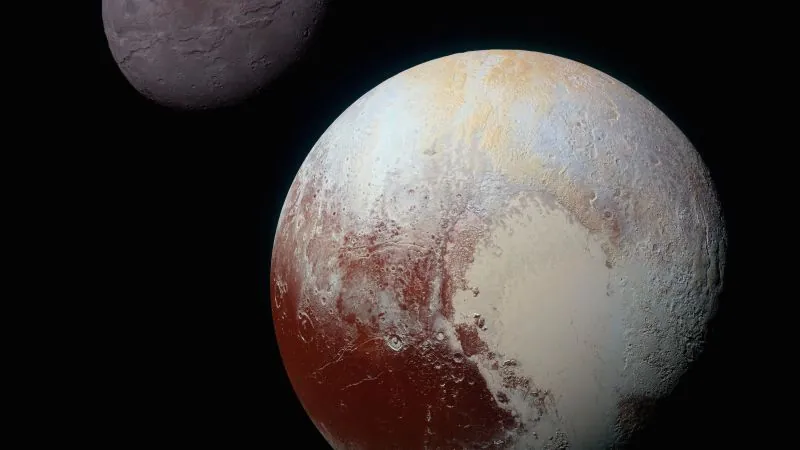
Pluto's Mysterious Moon Charon: A 'Kiss' Leads to Discovery!
2025-01-10
Author: Kai
Introduction
For years, scientists have puzzled over how Pluto ended up with its surprisingly large moon, Charon, which is nearly half the size of its dwarf planet counterpart. Recent groundbreaking research proposes that these two celestial bodies may have experienced a unique type of collision billions of years ago, dubbed a "kiss and capture."
Traditional Theories
Traditionally, many experts believed that moons formed through gravitational capture or violent impacts, similar to the formation of Earth's moon, which resulted from a Mars-sized object colliding with our planet. This cataclysmic event expelled debris that eventually coalesced into the moon. However, scientists like Adeene Denton, the lead author of the study published in Nature Geoscience, argue that Pluto and Charon's icy and rocky composition sets them apart, making their formation story very different.
The 'Kiss and Capture' Model
The new model suggests that when Pluto and Charon collided, instead of their materials melting away into a chaotic mass, the two celestial bodies managed to stick together briefly, rotating in a combined form before parting ways while remaining bound by gravity – much like two figure skaters spinning tightly together. While this "kiss and capture" scenario deviates from typical collision models – often characterized as "hit and run" or "graze and merge" – it opens exciting avenues for understanding the origins of both Pluto and its large moon.
Formation of the Binary System
Research shows that rather than being destroyed or significantly altered, during their collision, Pluto and Charon compacted into a snowman-like structure, eventually settling into the binary system we observe today. Remarkably, this new insight suggests that Charon might be as ancient as Pluto itself, with the collision likely occurring around 4 billion years ago, merely tens of millions of years after the solar system formed.
Implications of a Subsurface Ocean
What makes this research even more intriguing is the possibility of a subsurface ocean beneath Pluto's icy exterior. The collision that formed Charon could have generated enough heat to melt some of the icy crust, supporting the theory that a hidden ocean lies beneath it. This idea aligns with findings about other objects in the Kuiper Belt, a region filled with icy remnants from the solar system's formation.
Future Investigations
Astrobiologist Alyssa Rhoden, who was not part of the study, expressed fascination over these implications, raising questions about whether other large moons in the Kuiper Belt may have formed in similar ways. This discovery may reshape our understanding of celestial formation and further investigate how Pluto and Charon interacted, leaving researchers contemplating the thermal history that led to the unique conditions we observe today.
Conclusion
In essence, we are now looking at a newly defined chapter in the history of the solar system, where astronomical interactions pave the way for the emergence of potential ocean worlds and unveil the mysterious dynamics inherent in space. What could this mean for the future of our explorations? Time will tell as scientists continue to peel back the layers of our cosmic understanding!





 Brasil (PT)
Brasil (PT)
 Canada (EN)
Canada (EN)
 Chile (ES)
Chile (ES)
 Česko (CS)
Česko (CS)
 대한민국 (KO)
대한민국 (KO)
 España (ES)
España (ES)
 France (FR)
France (FR)
 Hong Kong (EN)
Hong Kong (EN)
 Italia (IT)
Italia (IT)
 日本 (JA)
日本 (JA)
 Magyarország (HU)
Magyarország (HU)
 Norge (NO)
Norge (NO)
 Polska (PL)
Polska (PL)
 Schweiz (DE)
Schweiz (DE)
 Singapore (EN)
Singapore (EN)
 Sverige (SV)
Sverige (SV)
 Suomi (FI)
Suomi (FI)
 Türkiye (TR)
Türkiye (TR)
 الإمارات العربية المتحدة (AR)
الإمارات العربية المتحدة (AR)